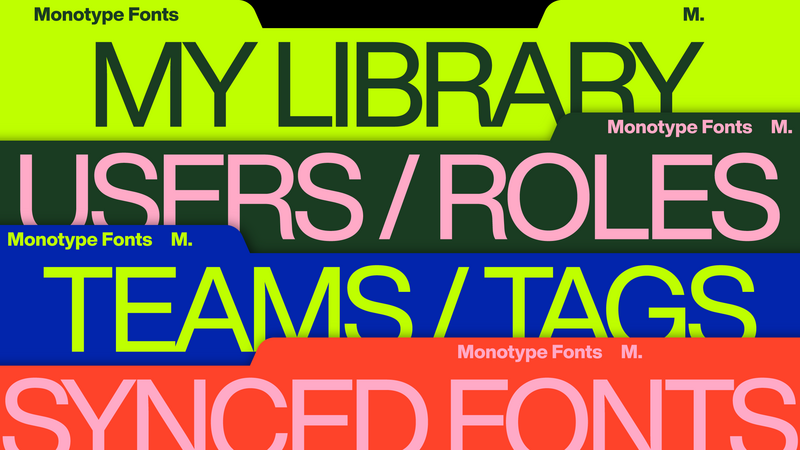There are numerous popular font managers available that cater to the diverse needs of designers, typographers, and font enthusiasts. Let's explore some of the options:
Monotype Fonts.
Monotype Fonts is a cloud-based solution that streamlines font discovery, usage, licensing, and deployment in one easy-to-use application. Its intuitive interface grants subscribers access to a vast collection of high-quality fonts—more than 150,000 and counting—from the industry’s top designers and foundries. And your unlimited desktop license means you can experiment with any of these typefaces before you decide which to use in your final products.
The tool also allows you to import your existing font library, and automatically supplies missing fonts in design files. It integrates with most applications—including Sketch, Illustrator, Photoshop, and InDesign—so creatives don't waste time looking for missing fonts. Licensing is also built into all subscription plans to ensure that you’re only paying for the fonts that you need.
The app's auto-complete search bar makes it easy to get to the right fonts and font families for your projects with real-time suggestions as you type. Monotype tags are built using state-of-the-art AI technology mapped precisely to a range of moods and descriptors, ensuring that you retrieve accurate results with whatever search terms feel right in the moment.
Once you’ve selected fonts for your projects, Monotype Fonts makes it a breeze to organize them however works best for you and your team, whether by project, style, mood, or your own invented categories. This shared organizational system not only makes fonts accessible, but also reduces the risk that someone will lose a font file or use the wrong font for an asset. And since the app is cloud-based, your entire team can access the fonts they need for your collaborative projects anytime, anywhere.
Windows Native Font Manager (Windows).
Windows operating systems come equipped with a built-in font manager that allows users to view, install, and uninstall fonts. The Windows native font manager provides basic font organization functions and the ability to activate or deactivate fonts. While it lacks advanced features, it serves as a practical solution for managing fonts on Windows platforms.
Font Book (Mac).
Font Book is the native font manager for Mac operating systems. Font Book allows users to install and activate fonts, create collections, and preview typefaces with ease. It also provides information about font licenses and supports font validation to ensure the integrity of font files. Font Book comes pre-installed on all Mac computers.
Adobe Fonts.
Adobe Fonts, formerly known as Typekit, is a font management tool that grants users access to a vast library of high-quality fonts for use in Adobe Creative Cloud applications. Adobe Fonts is integrated with other Adobe software, so users can browse, activate, and sync fonts across projects.
FontBase.
FontBase is a cross-platform font manager that offers a range of features for font organization and activation. It supports various font formats and provides an interface for browsing and previewing fonts. FontBase users can search for fonts, create collections, and activate fonts on demand.




